How to Improve E-Commerce Customer Experience
How to Improve E-Commerce Customer Experience

The e-commerce landscape has grown a lot over the past couple of years. During the pandemic, online shopping's popularity skyrocketed and it hasn't stopped growing ever since. With unlimited e-commerce stores, the market is long saturated.
Given the stiff competition, customer experience must be given priority. It plays a huge role in deciding customer retention and profitability. Retail e-commerce sales worldwide are currently at $3.23 trillion.
To improve customer experience, you need to provide customers with a seamless experience. This can be a mixture of online and offline interactions with customers. Doing so, you can achieve higher revenue and a loyal customer base.
Keeping this in mind, we'll be talking about how you can improve the overall customer experience.
Let’s dive right into it.
What is customer experience?
First, we need to define what’s meant by ‘customer experience’. The overall interactions a customer is having with your brand all count as customer experience. Brands have to map out the complete customer journey and use target personas from the time they first make contact until they make a purchase. Mapping this will help you to better understand how your brand performs at every step of the customer journey.
Even customer service interactions, post-sale services, and advertising count as customer experience. Ensuring every interaction with customers is flawless is the key here. Online retail is fragile since most retailers rely on good reviews and recommendations. It helps portray a good image of the online retailer for future customers.
Without good customer feedback, online retail is destined to fail. Customer experience is still one of the best factors to get good reviews. Brands having a positive interaction with customers is not very common as most retailers fail to provide what is needed. Nonetheless, this proves to be an opportunity for e-commerce stores to up their interaction game and provide the best level of experience they can.
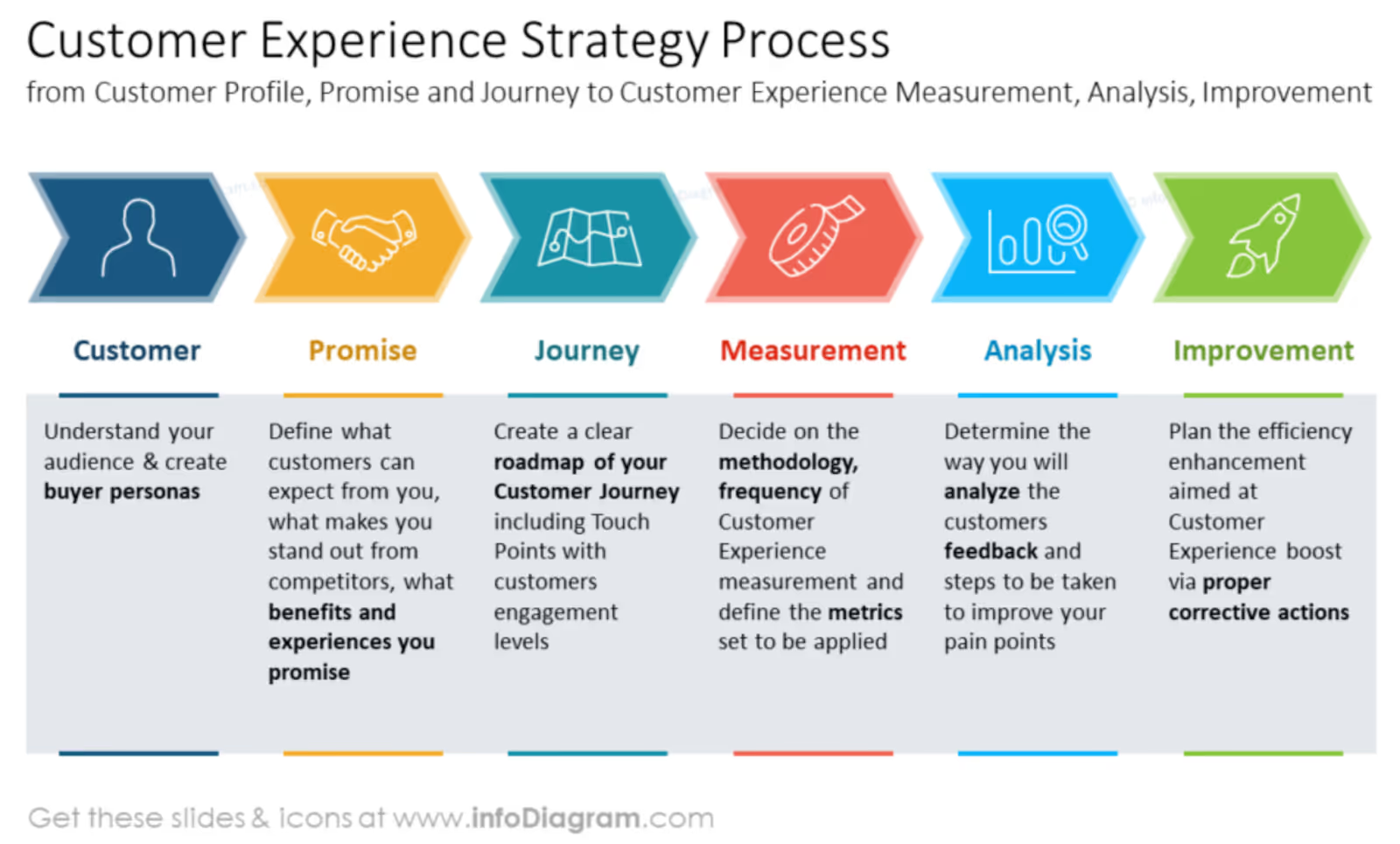
Coming back to the customer journey, the very first touchpoint of your brand with a customer might be a simple Google search or if they’re added to a B2B email list. Just as the first impression is important in life, e-commerce is no exception to that. When customers visit your website, they are given a bunch of information. From images to content and website interface to navigation, every feature adds to the overall customer experience.
Even the website load time is an important factor to consider. Next, the customer will navigate toward the products page. If the products are intriguing to the customer, then the customer journey will move towards payment. Here, customers need to get multiple payment options so they can choose the one they are most comfortable with.
If the process of payment is not simple, the customer might leave your e-commerce store at the last step of the customer journey. There’s not much room for a personal touch when it comes to checking out at an online store but you can provide an easier process, simple payment, timely delivery of products, and outstanding post-sale service.
If you’re not familiar with this concept yet, here’s a customer journey map you can consider.
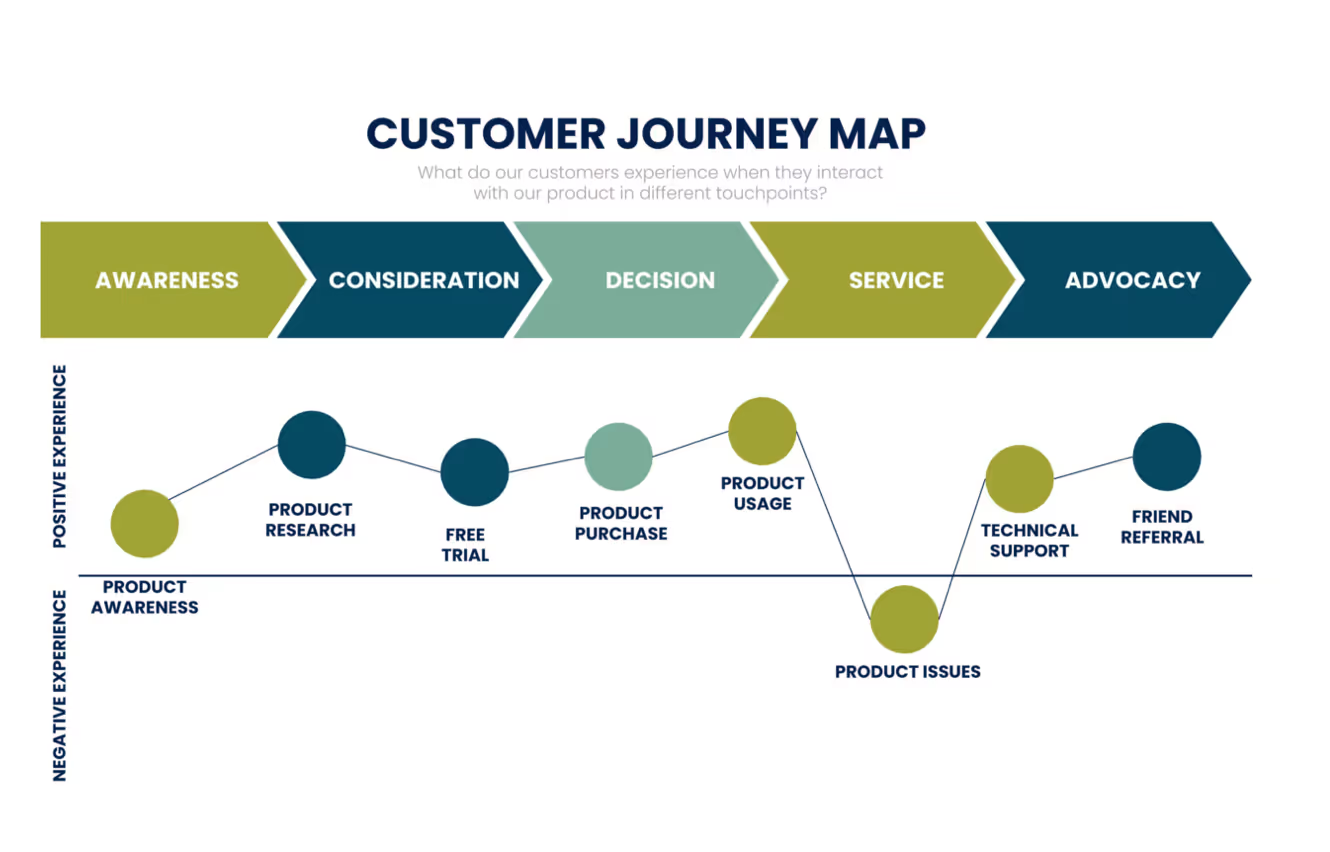
If you think customer support is not where you shine the most, consider outsourcing it to a professional business that knows the intricacies of customer support.
Why is the shopping experience important?
Customers are now extremely empowered and have unlimited options to choose from. Here are some reasons why you need to focus your energy on keeping customers happy.
1. Customer satisfaction is the new competitive battleground
The average customer satisfaction for firms across the globe is 86%. People are satisfied when you provide them with excellent customer experience beyond their expectations.
Now every company in the world (as well as e-commerce businesses) is competing on this new battleground to get the biggest market share in their respective industries. Brands are expected to deliver on their promises, whether it’s exceptional services or products. Only then, customers will consider a brand, dependable.
Online retailers can go above and beyond for their customers to show them extra care and support, some even offer free valuable webinars as a perk. The revenue that satisfied customers bring is much more than normal customers. As advised earlier, keeping an eye on the customer journey is imperative. You need to ensure all touchpoints are providing the same exceptional services to customers.
This way, you will exceed customers’ expectations and go far beyond what the competitors are offering.
2. It’s easier converting existing customers than turning new shoppers into loyal customers
Customers appreciate brands focusing on the experience as a priority. If you craft a good experience for shoppers, they will return to your online retail to do more business with you. Superior experience is a unique asset for your e-commerce shop.
You should focus on investing in current customers rather than finding new ones. The cost of acquiring new customers is significantly higher than maintaining the customers you already have. It might take some time, but eventually, your efforts will pay off and you’ll be able to get positive results.
3. Word-of-mouth is a powerful tool
If you don’t believe in the power of ‘word-of mouth’, think again. Customers share their experiences with each other whether it’s their friends, colleagues, or family. Adverts have lost their appeal since people started seeking 3rd party reviews that validate a company’s products or services.
For e-commerce stores, reviews are crucial. Customers are your advocates, if they like your product they will tell everyone about it. Similarly, if they don’t like your product or the experience they had, they will share that as well with other people and customer churn will be higher.
Imagine if all your customers have a good experience, they will become your advocates and do positive marketing for your store. Further, you can add the feature of live chat to your online store and make your business more responsive to improve customer experience and resolve all complaints in real-time.
When you improve the customer experience you will also improve your key business metrics such as:
- Referral revenue
- Total sales revenue
- Customer loyalty
- Brand equity
- Customer lifetime value
Now, we’ll move on to the different ways you can improve customer experience in e-commerce.
9 customer experience strategies to apply

The million-dollar question right now is, how to improve the overall customer experience?
There is no one-size-fits-all strategy when it comes to crafting a unique user experience. Companies are of different sizes, working in different industriesand markets and they have different services or products that they offer. Therefore, generalization is not an option for good customer experience.
1. Aim for the community
The power of community is already discussed in the previous sections. Having loyal customers spreading positive words about the products you offer might be the best form of marketing and it’s totally free.
Being human, we all want to belong to certain social groups. As customers use your products, you’ll eventually make a community of fans who love your store, the service they receive, and the products you offer. These people are the natural advocates of your company who will give you great reviews and help your business move forward by encouraging others to make purchases from you.
2. Create omnichannel for customers
Users can access your e-commerce website from different devices. Basically, when you create an optimized user experience, you’re giving more options to your customers in terms of interacting with the online store, browsing and making purchases. Your customers might be using a mobile device, desktop, or tablet to access your store online. You have to provide all customers with an experience that is tailored for their devices.
Omnichannel e-commerce contains all the touchpoints related to the company. It connects your supply chain with your shop, social, mobile, website, and email. A few decades ago, the idea of having different channels of sale seemed impossible. We had no other option but to walk and buy whatever we needed from a traditional brick-and-mortar store. Nowadays several applications help improve connectivity and supply chain visibility.
Now, things have changed. Sales went omnichannel as soon as the internet came into our lives. Providing a seamless experience to users across all platforms is now a necessity. Using omnichannel you can also use good quality exit-intent messages to reduce the bounce rate whether it’s a website or an app.
Do research with your marketing team. Study benchmark businesses. Determine where you can get the most happy customers and start from those channels.
When uploading content on each channel, use image presets for easier brand recognition.
3. Personalization is the key
An e-commerce business is all about personalized experience. Using data gathered, e-commerce sales use location, search results, and shopping in order to provide an experience customer-centric to you. Even though our data is recorded, as a result, we get more results that are relevant to us. This saves a lot of time browsing needlessly through a website.
Offer tailored customer engagement to customer needs whenever possible. If you come across an offer that looks like a perfect match and also gives value for money in the form of cashback or generous discounts, it will be hard to cancel that purchase.
It’s not surprising that companies all over the world spend a lot of time and money just to analyze customer data and make sense of it. This helps businesses to provide users with the right product at the right time - reducing the chance of bounce rate and securing confirmed sales.
4. Don’t forget mobile users
More than half of web traffic in the world is received by mobile devices. Desktops and laptops have been quickly replaced by mobile devices which are not indispensable for most of us. When thinking of great customer experience, keep in mind the importance of mobile users. The total number of smartphone users in the world is 6.5 billion.
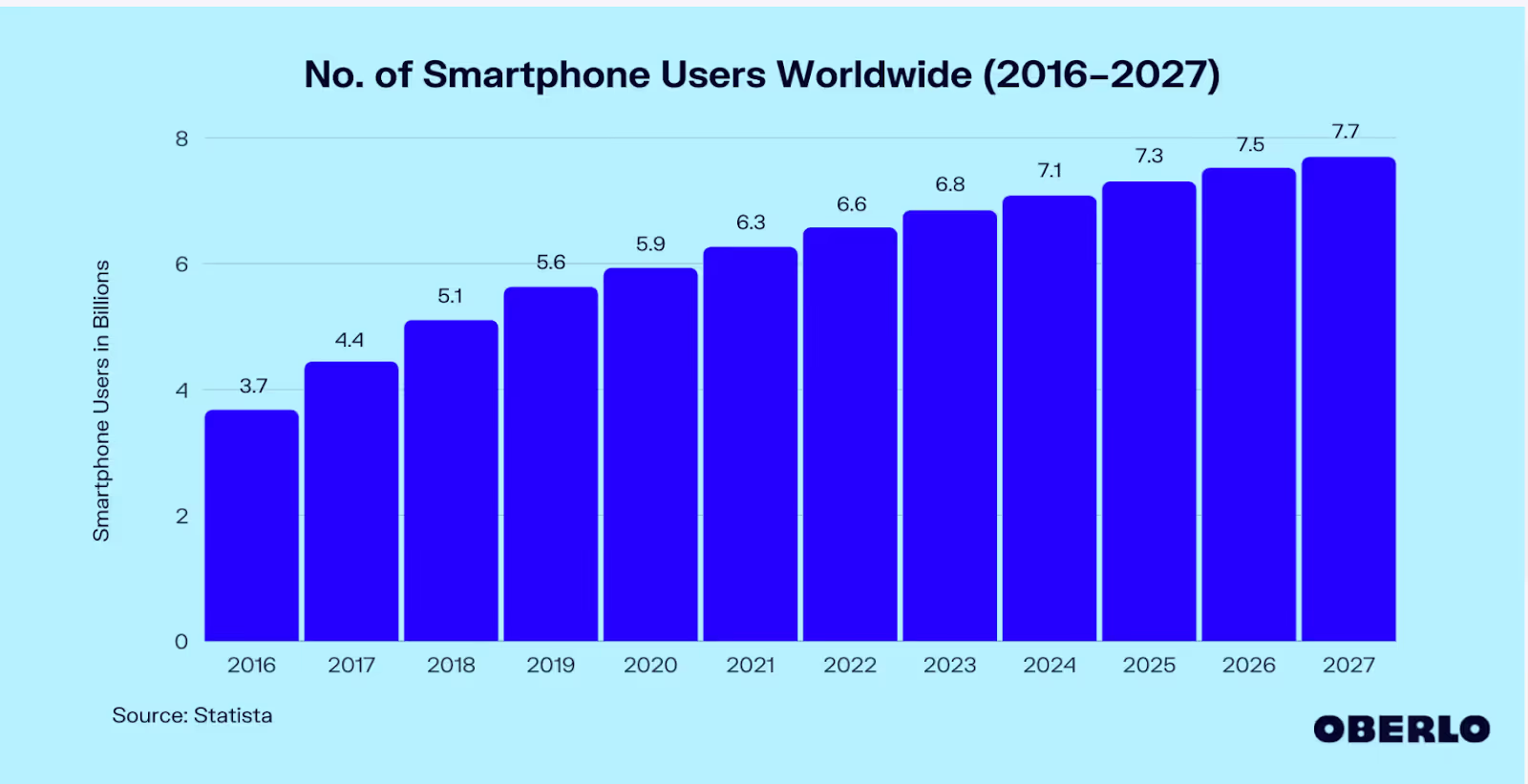
Since mobile phones are easier to navigate and require less energy, they are the go-to devices for most users. Your online website and store should be mobile-ready meaning that they should be compatible with mobile phones and also have a quick load time.
You might need to redesign the mobile app of your e-commerce store to enhance the interface, navigation, and user experience.
5. Spend time on your website development
If you’re customizing user experience for websites, hiring the right developers, whether Java or Python developers might be something you can’t ignore. Customers visit websites to browse for a product that they want to buy. However, if the website is not properly optimized for different devices, the customer experience might not result in what you want.
Use the right platform for your online store since there are many similar service providers you can choose from. Your website should be responsive on all devices, desktops, tablets, and mobile phones. You can measure the performance of your website by checking the bounce rate, load time and performance of individual pages (specially product pages and checkout page).
Further, your website content is extremely important. You should have pages on your store that are optimized for search engine optimization (SEO). If your SEO optimization is good, your website will be easily discovered by customers. For example, if you’re looking for the best dress forms in the country, your website should appear on the first page at the least to have more chances of being discovered by potential customers.
6. Keep the checkout process simple and effective
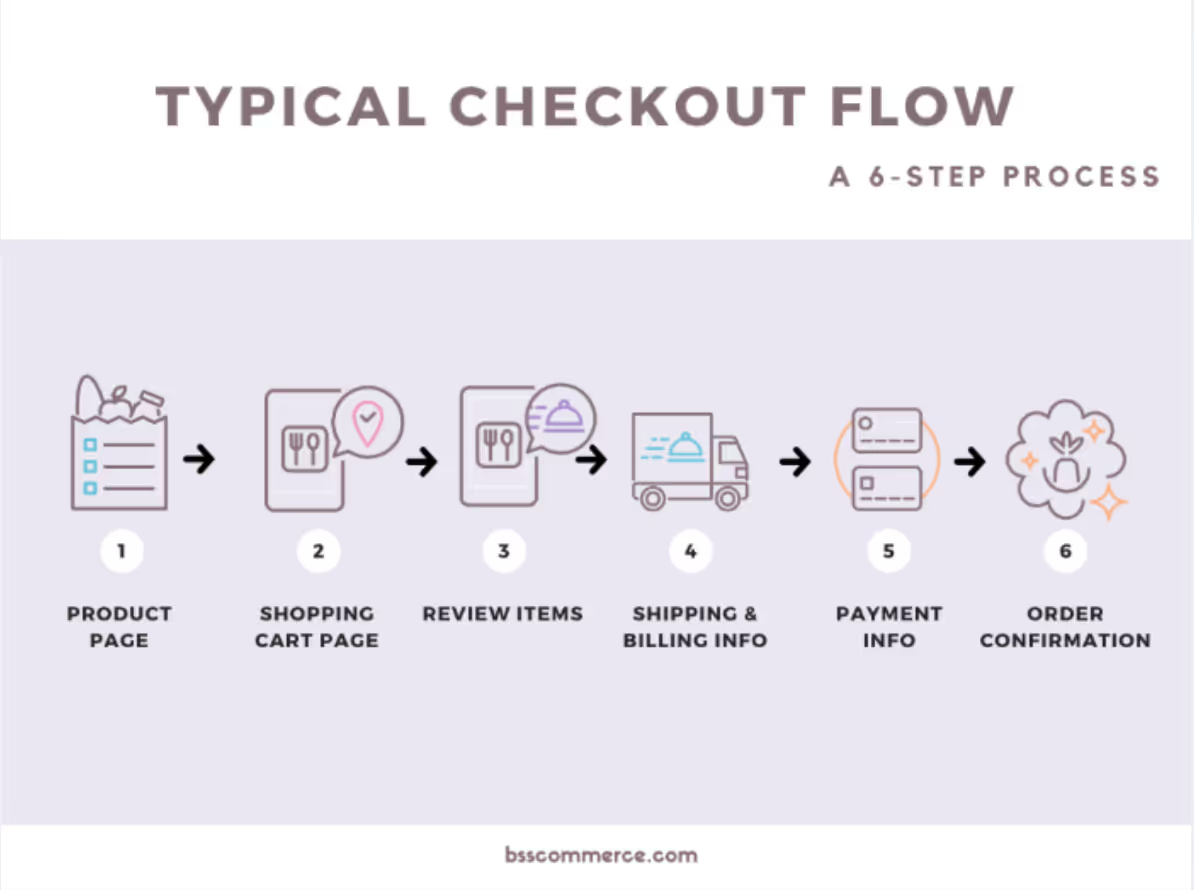
It goes without saying that the final step of the customer journey should be flawless. The loading time should be minimized as much as possible which can allow customers to finish the process quickly. It will be a great loss for you if the customers get annoyed at the final step of the journey. So, minimize the pain points they’ll experience with your brand.
The instructions for the payment process should be simple and data forms must be easy to follow. As mentioned above, customers should be given a wide range of payment options including digital wallets, credit cards, debit cards, etc. Payment security is another important part that you cannot compromise on.
Important: Make payments secure for your customers. Investing in additional security measures gives you and your customers peace of mind. Plus, they’ll realize the personal concern you have for them.
7. Timely and cheap delivery
To create a positive customer experience, improve the shipping time. The last thing any customer wants is to follow-up with customer support for their shipment. Make sure you deliver the products within the time you promised. Provide a transparent tracking system to customers so they can track their orders without any hassle.
It’s your responsibility to provide customers with the delivery as cheap as possible. If logistics is not your strong suit, work with a logistics partner to improve the delivery time. With this approach, you can also make delivery cheaper and provide exceptional service.
8. Keep it interactive
Your e-commerce store needs to stand out in every way - having an interactive store is one of them. When it comes to being interactive, there are many things you can do to improve the customer experience. For instance, you can provide a virtual reality (VR) experience to your shoppers online or offer easy online entertainment like word games.
This comes in very helpful for spec-sensitive items like wearables. Just take these orthopedic shoes from KURU Footwear, since it’s designed to alleviate pain, customers should be able to fully picture how it looks.
Also, you need staff to deal with customer queries while they are making a purchase decision. If your staff is not available, you can use chatbots and artificial intelligence tools as an advisor for customers to help them finalize their purchase decision.
9. Leverage social media to your advantage
With many users of social media, you have the chance to directly connect with your current and potential customers. Social media lets you give that human touch to your store. You can use it to advertise your e-commerce store, share messages, and publish reviews to attract more users to your website.
Hire a social media specialist to help you bring out your store’s best image on different social media channels. In case you get complaints on social media, the specialist will know how to politely deal with the situation and resolve problems.
How to deal with unhappy customers
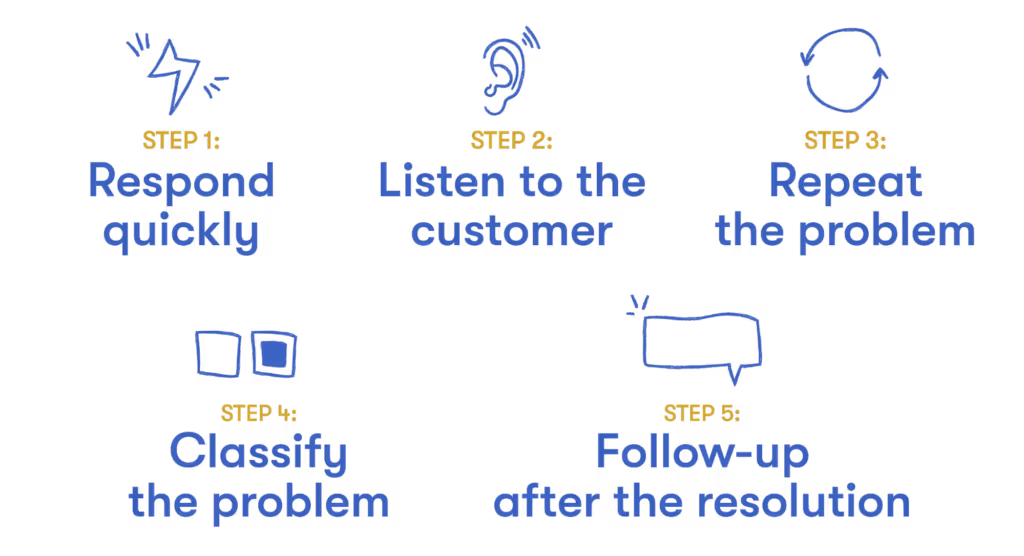
The way your e-commerce store responds to complaints shows whether you are concerned about customer experience or not. A brand’s reputation can get damaged if you treat a complaining customer in a bad way. Great customer service is extremely crucial in terms of maintaining great customer relationships and a loyal customer base for your online retail.
If we were living in an ideal world, there would only be positive feedback from customers all the time. Sadly, the reality is that customers are critical of your services or products because they are paying you for them. You should always get to the bottom of every complaint, be polite and try to help customers as much as possible in order to resolve their issues.
You can leverage good project management software, a customer relationship management (CRM) system, or an order management solution to provide better customer experience and improve some process automation for your interactions to make everything more seamless.
Pro Tip: Customers who had bad experiences give second chances to e-commerce stores that handle their complaints well.
Wrapping up
With competition growing, e-commerce stores are already in a price war where everyone is competing over the lowest prices. Customers need more than just a good product, they need a streamlined service at every step of the way. Putting serious efforts to improve customer experience will guarantee that you stand out in the market.
Use your store and all the channels we discussed above to provide a unique experience. You will be able to get loyal customers and become a successful e-commerce store owner. If you ignore the importance of customer experience, your store might not be able to survive in the long run.
Take the faster path to growth. Get Smith.ai today.
Key Areas to Explore
Technical Implementation Terms
Voice user interface (VUl) design
Speech recognition integration
Text-to-speech optimization
API connectivity and webhooks
Real-time data synchronization

Your submission has been received!














.svg)



